Sales Photography 101: Taking Good Photos of Reptiles
- Caitlin Griffiths

- Oct 8, 2023
- 2 min read
When uploading an animal to MorphMarket, you are competing with hundreds, if not thousands, of other breeders. The key to success (beyond general ethical breeding practices like ensuring the animals you produce meet and exceed market needs) is mostly photography.
Reeling a potential customer in with the primary photo of your reptile massively increases the chances of an enquiry, and therefore a sale.
So, what are the key factors for good Reptile Sales Photography?
Consistency
Transparency
Send multiple photos
Don't edit colours
Invest in good lighting
Backgrounds
The personality shot
Consistency
Having all of your photos look similar builds brand awareness, and allows for a less jarring and distracting experience when browsing your store.
Ensure the following are the same across your store:
Lighting
Background
Angle
Colour grading & white balance
Transparency
Reptiles are animals and can change colour. Being transparent with buyers about how an animal looks fired up versus down, or about a sudden change in appearance will do wonders for your reputation.
Additionally, be transparent about your own photography skills. If you are struggling to capture the true colours of an animal, say so.
Send Extra Photos
No matter what, a reptile will look different in different types of lighting.
Sending additional photos or a video of the animal in multiple types of lighting will ensure the customer knows exactly what they are buying.
I always do this before accepting any deposit.
Saturation
Applying light edits to the white balance of a photo, or patch tooling over the odd cat hair is fine. Going mad on the saturation and vibrance is not.
If you are editing a photo it helps to have the animal nearby so you can check the photo against the subject in real time.
Your MorphMarket reviews will thank you if you leave that particular slider alone!
Over-saturating photos is a short-term solution that will always end in a bad review.
Other breeders know what is and is not realistic, and at some point, a customer will buy an animal and leave honest feedback.
At the end of the day, the only thing over-editing achieves is discrediting yourself and the lines you work with.
Lighting
Finding a lighting set-up that works for you is the most important part of sales photography.
Ideally, you want a bright, white light which matches the angle you are taking photos.
The background you use will hugely affect how your lighting turns out. Darker backgrounds will reflect light very differently from a white background.
Backgrounds
Different backgrounds hugely affect how colours appear in photos.
A blue background will make an orange gecko look more vibrant. A white background may wash a paler animal out. A dark brown background may make an animal appear more yellow.
I find the easiest background to achieve accuracy on is a lightly textured white background.
The Personality Shot
Showcasing an animal's personality can help a potential customer connect with an animal.
A lot of people are more interested in personality and temperament than morph. Adding a photo of a gecko ‘smiling’ at the camera gives the customer an insight into that animal's personality.
Don’t use these as the primary photo, however.
My Set-Up for Reptile Photography
All photos used in this series were taken on an Olympus 5 Mark 3 camera with a macro lens.
For lighting, I use an Arcadia Jungle Dawn LED.
I make minor edits (white balance, content-aware crops, and editing out cat hairs) in Lightroom and Photoshop.
The background is perilite.







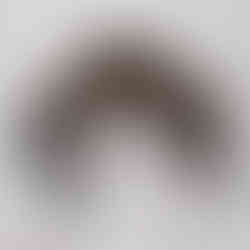








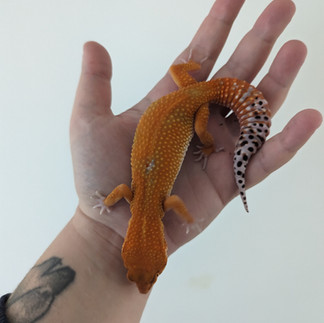



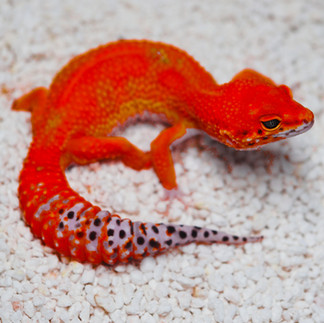



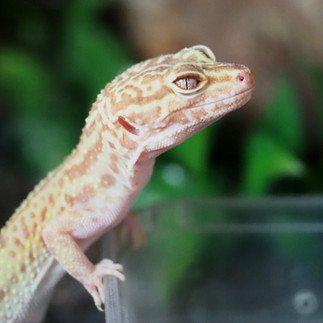





















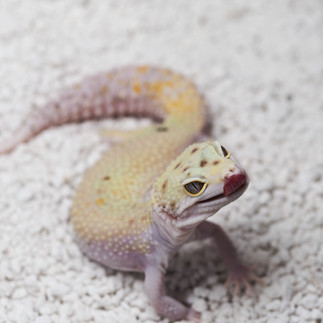



Comments